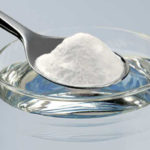In addition to its unique aroma, coriander is also a nutritious herbal with vitamins such as vitamin A, C, B group, K along with large amounts of calcium, iron, phosphorus, magnesium, potassium… Research shows that coriander is rich in vitamin C. Each 100g of coriander will provide 140mg of vitamin C, which is 5 times the number of lemons. In addition, the amount of beta-carotene is also 9 times that of tomatoes.
Thanks to its abundant nutrients, coriander brings many health benefits such as improving digestive issues, reducing the risk of infections, providing natural antioxidants to remove free radicals, and reducing cholesterol.
In addition, coriander has the ability to lower blood pressure, diuretic, and stimulate insulin secretion, thereby helping to stabilize blood sugar. It can be said that every part of the coriander plant is a treasure.

It is a pity for those who do not know how to eat this type of vegetable. From coriander, you can prepare many different dishes. For example, the dish below.
Pickled coriander
Ingredients
– Coriander: 500g
– Chili
– Garlic
– Soy sauce, sugar, vinegar, salt
Directions
– After buying coriander, cut off the roots, pick off the yellow leaves, then wash it thoroughly. Then scoop out the coriander and put it in a basket to drain, you can use paper towels to dry the vegetables.
– Prepare the pickling sauce including 1 bowl of vinegar, 1 bowl of soy sauce, and a little sugar. Put the ingredients in a clean pot, turn on the stove with low heat and simmer until the sugar is dissolved, then turn off the stove and let it cool.
– Cut the coriander into medium-sized pieces. Finely chop the garlic and chili. Depending on your tolerance for spicy food, you can increase or decrease the amount of garlic and chili to suit your taste.
– Next, add the coriander, garlic, chili, a little salt, and white sugar to a bowl. Use chopsticks to mix well and leave it like that for about 15 minutes.
– After marinating the vegetables, the sauce has also cooled down. At this point, you put the vegetables in a dish and pour the sauce on top. Mix well for the coriander to absorb the flavors, then use cling wrap to cover it. Finally, cover it tightly and store the coriander in the refrigerator. You should leave it overnight before enjoying it, it will taste great.
This dish has a rich, slightly spicy, slightly sour taste that is very delicious. You can use it as a side dish to stimulate the taste buds and reduce the greasy feeling for oily dishes.

Traditional Korean ways of cooking coriander
From coriander, you can also learn the interesting ways of cooking by the Koreans.
The first way is similar to the Korean dishes like seaweed cakes or fried spring onions. After thoroughly washing the coriander, mix it with a sticky dough and then deep fry it with hot oil. The aroma of the flour after frying somewhat overpowers the pungent smell of coriander, making it easier for Koreans to eat. You can dip it in chili sauce to enhance the taste.

The next dish is pickled coriander with soy sauce. This dish is more complicated and time-consuming. The Koreans will prepare a mixture of soy sauce, vinegar, chili powder, sugar, salt, roasted sesame seeds, and boil it. After that, the coriander is cleaned and soaked in this mixture for about 2-3 days. When the coriander has absorbed the spices, it can be taken out and eaten with rice or rolled with grilled meat.






































